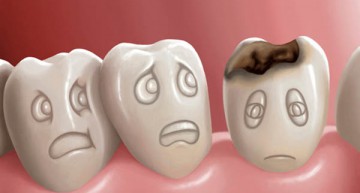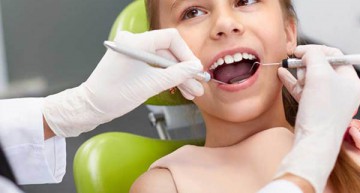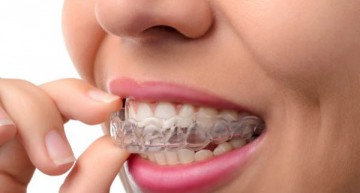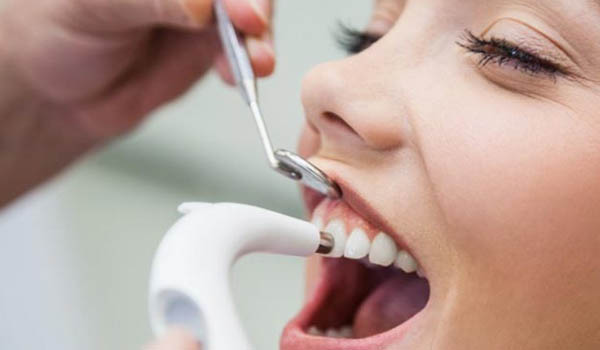
There are diseases and conditions that affect the tissues that support the dental organs or the structures that replace them. Prevent, diagnose and treat these conditions the handles Periodontics, specialty of dentistry that is also dedicated to maintaining health, function and aesthetics of these structures and tissues.
Periodontitis and gingivitis are among the main pathologies that periodontics deals with . Similarly it also deals with the prevention and treatment of other diseases such as periimplantitis. Gum disease is caused by bacteria when they are not removed by daily brushing and flossing, so it is totally preventable if daily use of these resources is made.
Periodontal diseases (around the tooth) are very common and begin by injuring the gums. In most cases, it does not cause pain and, therefore, this problem goes unnoticed. However, its early detection and treatment are of utmost importance, because periodontal disease ends with the life of the tooth (mobility, infection, extraction).
Inflammation in the gum area can progress to affect the surrounding bone and support the teeth. The three stages of gum disease – from less to more severe – are gingivitis, periodontitis and advanced periodontitis. Symptoms such as swollen, red, sensitive or bleeding gums; gums that recede or detach from the tooth; permanent bad breath or bad taste in the mouth; or loose teeth are those that should alert the patient in order to go to treat this condition that affects oral health.
The best professionals in Urbina Dental Clinic
Through different diagnostic mechanisms a specialist is the only person able to determine whether or not a periodontal treatment is required. The treatment of periodontics ranges from the education and correction of the oral hygiene technique, to the control of the bacterial plaque by the patient, to the removal of the plaque and stones from the bags around the teeth, polishing and smoothing the roots.
With this treatment, the gum adheres back to the tooth, thus eliminating inflammation. In more advanced cases in which the patient has unstable or moving teeth, the periodontal disease can be treated surgically, adjusting the bite, for example, joining the teeth with temporary splints to reduce movement obtaining more comfort and better function. Additional treatments may include orthodontics or placement of prosthetic devices.
Periodontics is not only the treatment of diseases, it also allows recovering lost tissue. In the case of gingival recessions as a result of periodontitis, or traumatic brushing, there are techniques that allow tissue regeneration, as well as grafts and complementary surgeries. In any case, it is important that the patient goes to periodic controls in order to prevent a new infection.

How can periodontal diseases be prevented?
To maintain good dental health we have to have a strict routine of cleaning since it is important to remove from the dental plaque of the tooth and gums on a daily basis, so we should brush twice a day, although it is advisable to perform after for each meal, in addition to brushing we must use any other interdental hygiene instrument such as: silk thread, interproximal brush, water jet or mouth rinses. The correct use of these instruments will prevent periodontal diseases and consequently their annoying symptoms.
Another important factor that intervenes in the prevention of this condition is the regular visit to the dentist, the cleaning that this makes us help to eliminate dental plaque in time. Although we have good hygiene, it is very difficult to completely remove the dental plaque by oneself, so it is recommended that we combine the daily hygiene that we do at home with the regular visit to the specialist. A light scraping is of great importance to maintain proper oral health.
It is important to mention that the dirt produced by the food we consume not only accumulates on the teeth, but also between the gums and the teeth. We mention this to highlight the importance of combining daily hygiene with the help of the dentist.
To remove the dental plaque that accumulates between the gums and teeth, we must visit at least 2 times a year to the dentist, this way would be reviewing the state of the gums, which is very important to avoid the fearsome periodontal disease.
What are the tools I can use to remove plaque or plaque?
The most important tool of all is the toothbrush, those soft bristle brushes are more efficient to remove plaque than hard brushes, however, the importance lies mainly in the way we use the brush. Currently, different techniques have been developed for tooth brushing, but the dentist’s opinion and the instructions that he can give us are always better.
In order for a toothbrush to eliminate bacterial plaque from the teeth and gums, it is necessary for its bristles to be in good condition. When the brush is opened, it can no longer remove tartar and there is a risk of accumulation of the plaque. bacterial plaque to form a periodontitis. Therefore, it is advisable to replace it when it is worn out.
The use of dental floss is important within oral hygiene because it helps to reduce the formation of bacterial plaque. This is because the thread can reach places where the toothbrush does not reach.
Interdental brushes and devices that spread water under pressure are tools that can complement hygiene techniques. Although these objects do not completely remove the dental plaque, they can perfectly eliminate the remains of food that favour the formation of tartar.
Another fundamental tool is the periodic visit to the dentist to control oral health. The dentist has the experience to determine the frequency with which oral hygiene should be performed. When this procedure is fulfilled, the appearance of periodontitis is avoided.
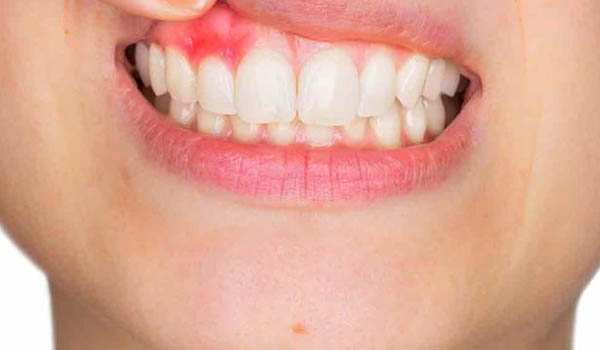
Causes of periodontal disease
The main cause of periodontal diseases is the accumulation of bacterial dental plaque between the gums and the tooth. When there is a large deposit of bacterial plaque the population of this responds with the appearance of gingivitis.
Those people who have greater sensitivity, either genetic or produced by external factors such as smoking, diseases such as diabetes, hormonal changes or the intake of antidepressant medications that have as a side effect the decrease in the production of saliva, making the mouth This most vulnerable, it is very common for periodontitis to occur.
If the bacterial plaque changes its composition, increasing the amount of germs, periodontitis evolves faster than normal.
Occasionally, with age the percentage of individuals suffering from periodontitis increases, it is believed that it is due to the deterioration of the organism’s defence system.
Can periodontitis be contagious?
Periodontal disease, known as periodontitis can easily be passed from parents to children even between couples, however, for this to occur the recipient must be sensitive to these bacteria.
Many studies infer that genetically susceptible people can get periodontal diseases through saliva, that is, when the couple or a family member comes into contact with contaminated saliva, there is a risk of getting periodontitis. For this reason, it is not uncommon for entire families to undergo periodontal treatments. So when a person of the direct family group is detected the illness, their relatives are made the respective medical check-up.
The state of oral health is related to the habits present in families. Sometimes we get parents with swollen and bleeding gums for not maintaining proper hygiene in the home, an action that has as a consequence that their children also develop this type of affections because they do not receive the proper education in oral hygiene. Also, there are responsible parents who are dedicated to teaching their children good hygiene habits and awareness of the importance of visiting the dentist periodically. Children who develop in this type of environment, usually have a healthy gum and teeth.
Relationship of periodontitis with other diseases
There are different factors that can be related to periodontitis, some with more influence than others. Among which we can mention the following:
- Oral hygiene is a fundamental factor since, if you do not have good hygiene, the likelihood of tartar accumulating in your teeth and gums is high.
- Tobacco: smokers are more likely to have stones in their teeth, in addition to deeper pockets between their gums and teeth, and also to destroy the tissues that fix their teeth. Tobacco has the characteristic of altering the defences that are normally found in the gums, allowing the bacteria that accumulate in this area to be more aggressive, in addition the tobacco components can alter the functionality of the teeth.
- Diabetes: diabetic patients should be very attentive to the care of their teeth, especially the periodontal state. It is important to go to the dentist more often to control oral health, studies have shown that people with diabetes are more likely to lose teeth than a person in good health. For this reason, it is recommended that patients with diabetes have a lot of control with oral hygiene.
- Cardiovascular diseases: recent research shows that periodontitis can be related to the development of cardiovascular diseases. Some specialists indicate that this is because the inflammatory proteins and the bacteria that are in the periodontal tissue, enter the bloodstream and manage to cause different effects in the cardiovascular system.
- Age: the relationship with age does not necessarily imply the aging process but, the time in which bacterial plaques and calculus have affected the structure of the tooth.
- Sex: many studies have shown that women maintain better oral hygiene, therefore, their periodontal status is better.
Other related factors are:
- Race
- Genetics
- Virus
- Local factors of the tooth.
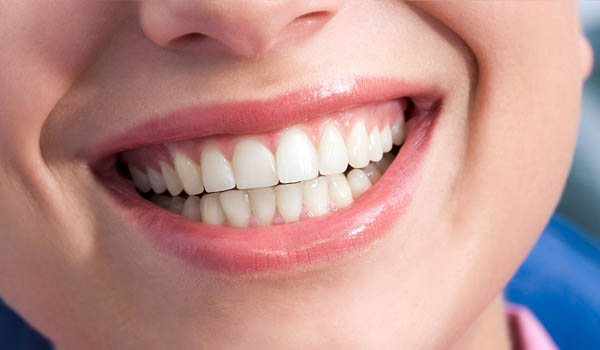
How can periodontal diseases be cured?
Periodontal diseases are cured by completely eliminating the cause that produces them, that is, the plaque or tartar that is accumulated and calcified in the gums and teeth is eliminated.
When these deposits are already highly formed and are stuck, it is necessary to use special instruments to eliminate them. In cases where the depth of the detachment is less than 5 millimetres, you can go directly to the roots and carry out the decontamination process without removing the gum.
In cases where the depth of the detachment of the gum is greater than 6 millimetres, it is necessary to apply a microsurgery that allows the gum to be separated, to eliminate the tissue that is inflamed and that has occupied part of the bone area, decontaminate the root and stimulate the regeneration of the new bone.
The most effective treatment we can employ and the most economical is prevention. As long as this type of condition is detected in time, it will be easier to treat it, therefore, the treatment will be faster and more effective.
Many times affected people go to the dental office in a very advanced stage of the disease, when this happens the treatment is almost impossible, it is only to extract the affected tooth or teeth. For this reason it is important to prevent periodontal diseases.
Oral hygiene depends directly on us, maintaining good oral health is our task, so we must follow the recommendations of our dentist and periodically attend to prevent them from developing these types of diseases.


